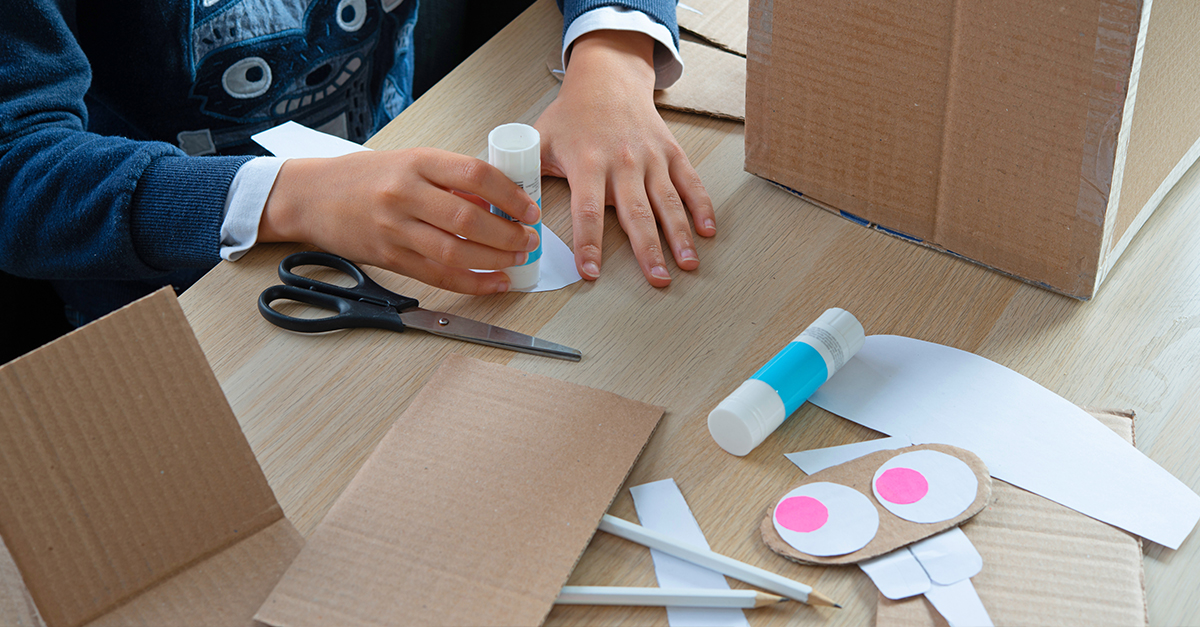
A child learns many things through activities that involve questioning, inquiry, and critical thinking. When given support, encouragement, guidance, and time for exploration, he becomes naturally eager for knowledge and is capable of expressing interest in his own learning. In essence, students gain greater understanding by solving problems or answering questions related to real life. Today, these ideas are evident in a methodology called project-based learning. In project-based learning, the student can express interest (or perhaps the parent can tap into the student’s interest) and undertake a project with guidance. The result is generally some form of student presentation, or creation of an actual product. The homeschooling environment is the perfect place to let students of all ages and abilities explore their interests. To get started, you need to consider several factors when incorporating project-based learning to make it a successful and meaningful experience for your student.
First, begin with a realistic problem or question that aligns with your student’s interests. Ideally, the question should be open-ended and come from the student himself. This will personalize the experience and increase his motivation to participate. A question may be very simple and develop naturally from a day-to-day experience, current event, interest in subject matter, or hobby. For instance, when listening to a song he may ask, “What is the name of that instrument I hear?” or “Why is an orchestra divided into different sections?” He might also declare, “This is a happy song! Why does music sometimes make me feel sad or excited?” This curiosity in music may then become the focus of inquiry. As a result, he might decide he would like to learn about different instruments and how they are made. He may then add to or change his focus and want to know how music is written, composed, and performed. If he does not know how to read music, this may be another area he wants to explore. You can offer guidance and ask him open-ended questions such as, “What could you use to make a…?”, “What kind of information on___ are you looking for?”, or “How would you show…?” to help him uncover new insights and to spark his enthusiasm for research. Encourage him not only to look for information in books and websites but also to seek help from community members or professionals, if applicable.
The information your student gathers from his music research may then inspire him to assume the role of a composer, teacher, instrument designer, or performer. He may decide to try to write a song, teach someone how to read music, design a new instrument, or create an original musical performance. Maybe he will want to incorporate several of these ideas. The possibilities are endless! Keep encouraging him. Through his research he may discover that music connects with other subject areas, even math. (For example, in written music, each note has a fractional value that tells how long a particular note should be played or sung. The music is divided into measures, and a “time signature” tells the number of beats in each measure.) He may discover when listening to or reading music that he hears or sees patterns. An older student may decide to determine the relationship between the length of instruments and their pitch. It’s amazing what he will discover, dream up, and share with you. You can help keep the learning process real by encouraging him to use some of the same tools and techniques that experts in the field use to conduct investigations and solve problems.
As he continues to explore, develop his ideas, and apply his skills toward his final product, you can periodically offer feedback and monitor his progress. It is also important to encourage student reflection throughout the project. You can use (or alternate between) different methods, such as written reflections (blogs or journals, for example), short conversations, or podcasts in which he reports freely about his progress or challenges. By providing meaningful feedback and collaboratively reviewing his work, he will learn that most people’s first attempts do not result in an end product, and that edits, alterations, and adaptions are frequent features of real-world work.
Finally, he can present his final creation to an audience of invited guests and evaluate the results. Work on a project can be more meaningful to a student when it is not done only for the instructor, a grade, or an assessment. When a student presents his work to a real audience, the experience becomes more authentic, and he may be inspired to care more about its quality. In addition, be certain to take time at the end of the project to debrief with your student after he has presented his work. You can use final reflections to encourage him to set goals for the next project. You may choose to use a checklist, rubric, or series of questions in a one-on-one conversation to check for understanding and bring closure to the project. Keep in mind that you, too, benefit from making reflection part of your student’s project-based learning process. Capture your thoughts at the end of the project about what worked well, what aspects were challenging (for you or for your student), and how you might improve your involvement or role as mentor the next time. Share your reflections with friends or peers in the homeschool community so that others can benefit from your insights and experiences with project-based learning.
Project-based learning can ignite a student’s passion for learning while developing new abilities and skills. For your student, the appeal of project-based learning will stem from his desire to learn and his ownership over the task. This in turn will instill pride and build his self-esteem and confidence. Project-based learning can create opportunities for your student to investigate questions that are meaningful to him while gathering information, learning real-world skills, and having fun. By being a supportive and flexible mentor, you can help guide your student through a successful project-based learning experience.
Homeschooling 101 eBook
No one knows your child better than you. We trust parents, and we want you to have the confidence to make the right decision for your situation.
We have compiled this eBook to help you through your decision. You’ll learn:
- The History of homeschooling
- How to find your state’s homeschool laws
- The different styles of homeschooling
- Tips from both professionals and veterans
- Where to find practical and inspirational resources to improve your homeschool experience
Enter your information below, and we will email the eBook to you right away.




Brilliant advice! thank u
Thanks, Lindy! We’re glad that you found value in it. 🙂